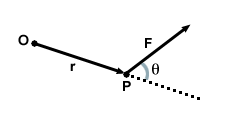Please wait while we process your payment
If you don't see it, please check your spam folder. Sometimes it can end up there.
If you don't see it, please check your spam folder. Sometimes it can end up there.
Please wait while we process your payment

By signing up you agree to our terms and privacy policy.
Don’t have an account? Subscribe now
Create Your Account
Sign up for your FREE 7-day trial
By signing up you agree to our terms and privacy policy.
Already have an account? Log in
Your Email
Choose Your Plan
Individual
Group Discount
Save over 50% with a SparkNotes PLUS Annual Plan!
 payment page
payment page
Purchasing SparkNotes PLUS for a group?
Get Annual Plans at a discount when you buy 2 or more!
Price
$24.99 $18.74 /subscription + tax
Subtotal $37.48 + tax
Save 25% on 2-49 accounts
Save 30% on 50-99 accounts
Want 100 or more? Contact us for a customized plan.
 payment page
payment page
Your Plan
Payment Details
Payment Summary
SparkNotes Plus
You'll be billed after your free trial ends.
7-Day Free Trial
Not Applicable
Renews July 8, 2025 July 1, 2025
Discounts (applied to next billing)
DUE NOW
US $0.00
SNPLUSROCKS20 | 20% Discount
This is not a valid promo code.
Discount Code (one code per order)
SparkNotes PLUS Annual Plan - Group Discount
Qty: 00
SparkNotes Plus subscription is $4.99/month or $24.99/year as selected above. The free trial period is the first 7 days of your subscription. TO CANCEL YOUR SUBSCRIPTION AND AVOID BEING CHARGED, YOU MUST CANCEL BEFORE THE END OF THE FREE TRIAL PERIOD. You may cancel your subscription on your Subscription and Billing page or contact Customer Support at custserv@bn.com. Your subscription will continue automatically once the free trial period is over. Free trial is available to new customers only.
Choose Your Plan
This site is protected by reCAPTCHA and the Google Privacy Policy and Terms of Service apply.
For the next 7 days, you'll have access to awesome PLUS stuff like AP English test prep, No Fear Shakespeare translations and audio, a note-taking tool, personalized dashboard, & much more!
You’ve successfully purchased a group discount. Your group members can use the joining link below to redeem their group membership. You'll also receive an email with the link.
Members will be prompted to log in or create an account to redeem their group membership.
Thanks for creating a SparkNotes account! Continue to start your free trial.
We're sorry, we could not create your account. SparkNotes PLUS is not available in your country. See what countries we’re in.
There was an error creating your account. Please check your payment details and try again.
Please wait while we process your payment

Your PLUS subscription has expired
Please wait while we process your payment
Please wait while we process your payment

Work, Energy and Combined Motion
Having established the dynamics of rotational motion, we can now extend our study to work and energy. Given what we already know, the equations governing energetics are quite easy to derive. Finally, with the equations that we have derived, we will be able to describe the complicated situations involving combined rotational and translational motion.
Given our definition of work as W = Fs, can we generate an expression for work done on a rotational system? To derive our expression we begin by taking the simplest case: when the force applied to a particle in rotational motion is perpendicular to the radius of the particle. In this orientation, the force applied is parallel to the displacement of the particle, and would exert the maximum work. Given this situation the work done is simply W = Fs, where s is the arc length that the force acts through in a given period of time. Recall, however, that arc length can also be expressed in terms of the angle swept out by the arc: s = rμ. Our expression for work in this simple case becomes:
| W = Frθ = τμ |
What if the force is not perpendicular to the radius of the particle? Let the
angle between the force vector and the radius vector be θ, as shown
below.

For you calculus types, there is also an equation for work done by variable torques. Instead of deriving it, we can just state it, as it is quite similar to the equation in the linear case:
W =  τdμ τdμ |
Thus we have quickly gone through deriving our expression for work. The next thing after work we studied in linear motion was kinetic energy, and it is to this topic that we turn.
Consider a wheel spinning in place. Clearly the wheel is moving, and has a kinetic energy attached to it. But the wheel is not engaged in translational motion. How do we calculate the kinetic energy of the wheel? Our answer is similar to how we calculated the result of a net torque on a body: by summing over each particle.
Please wait while we process your payment

